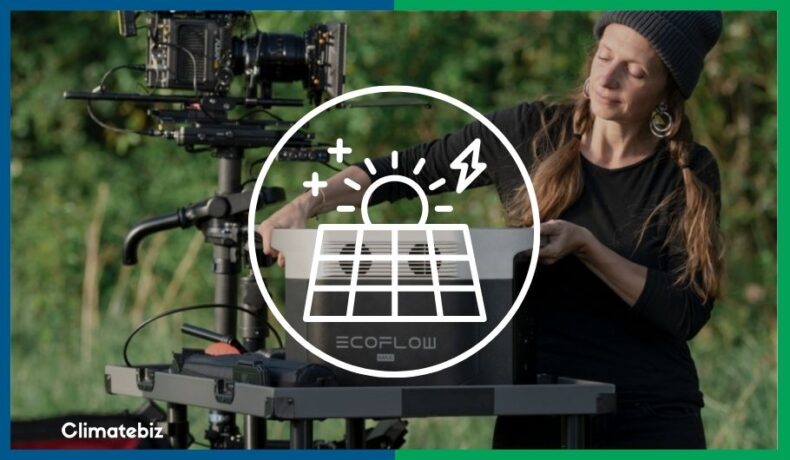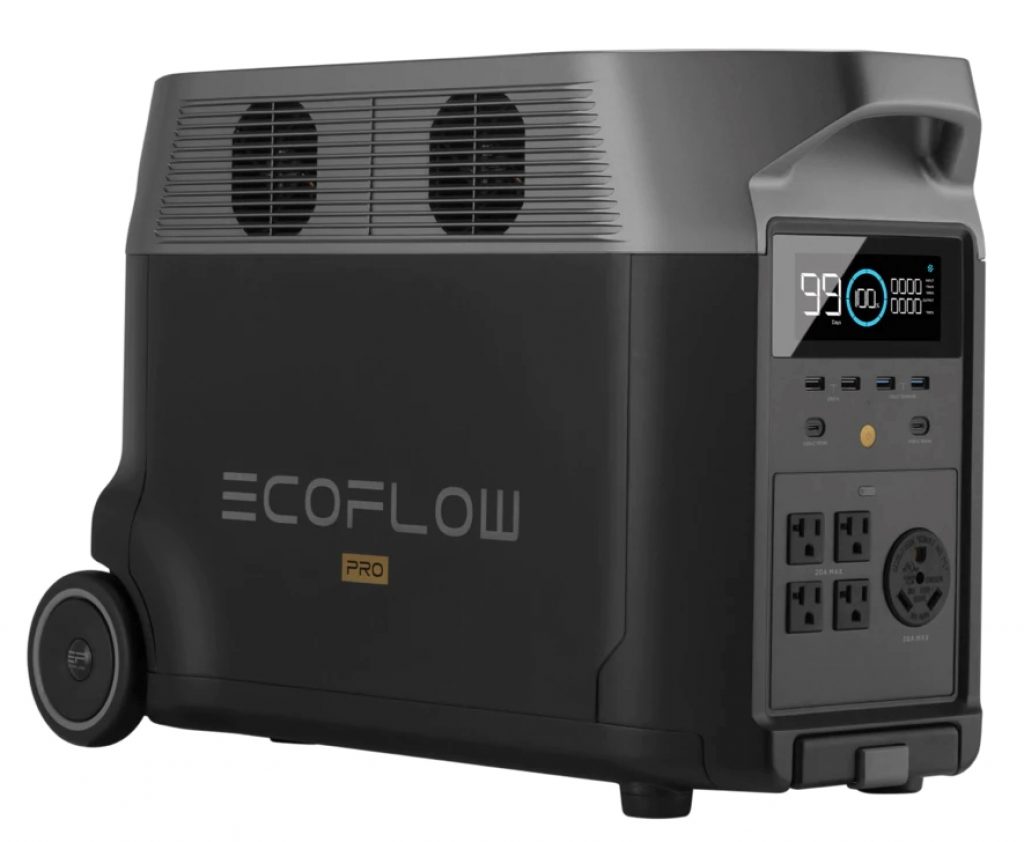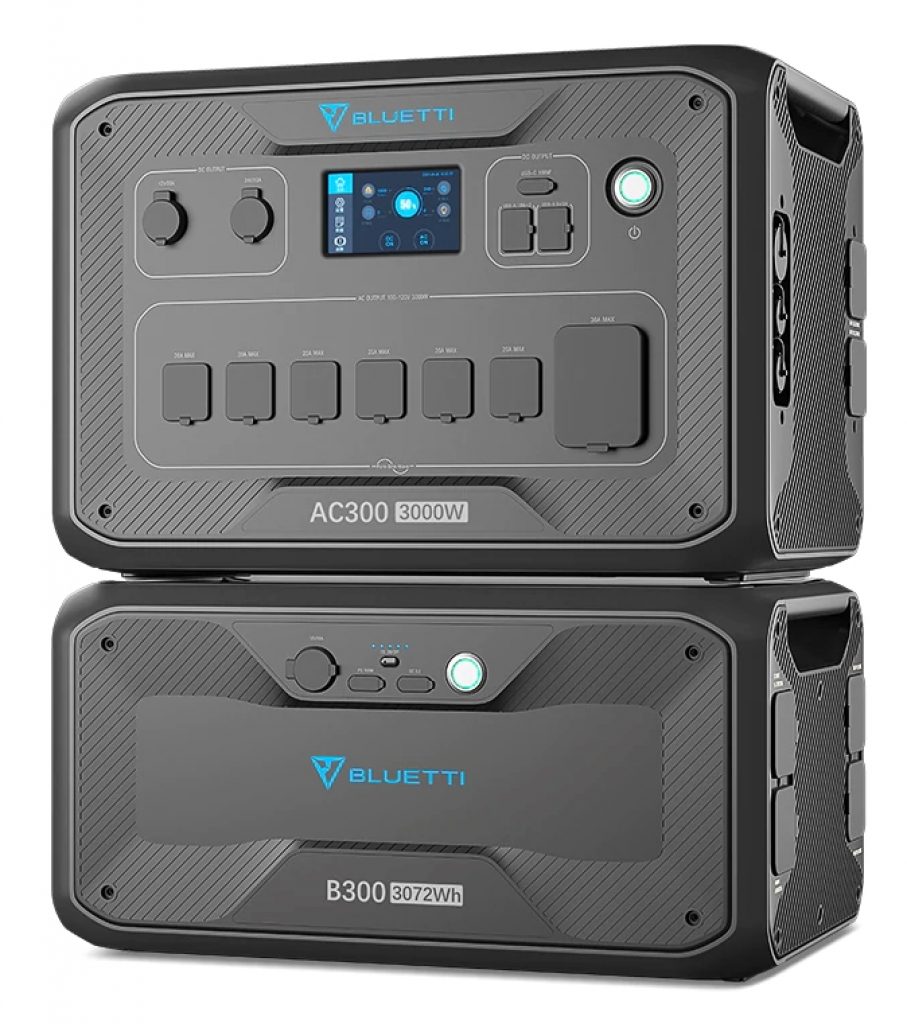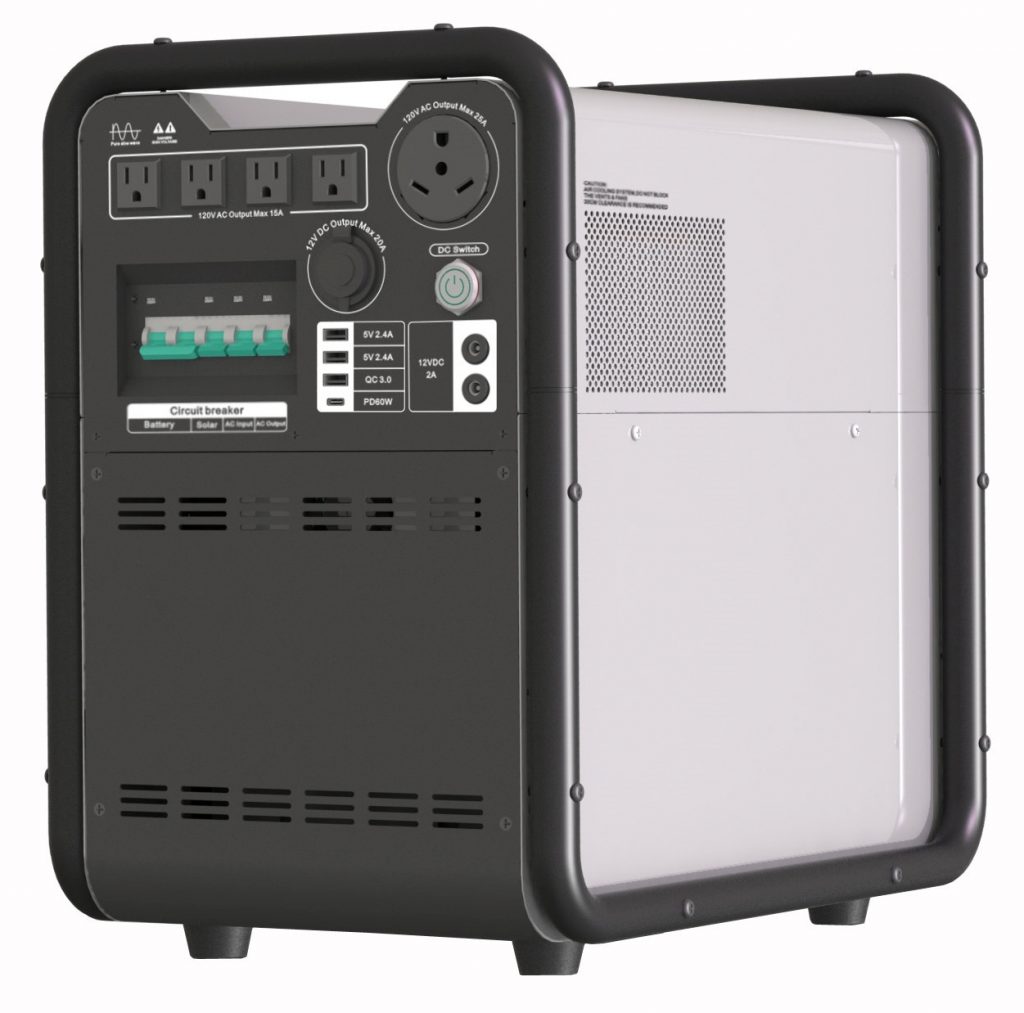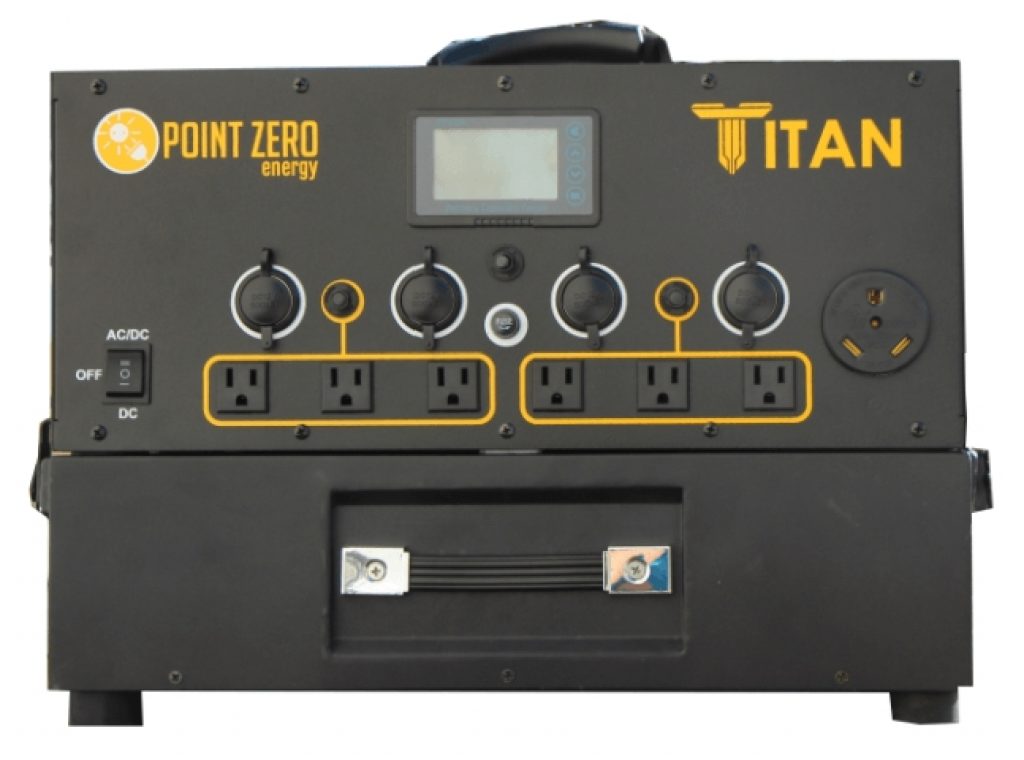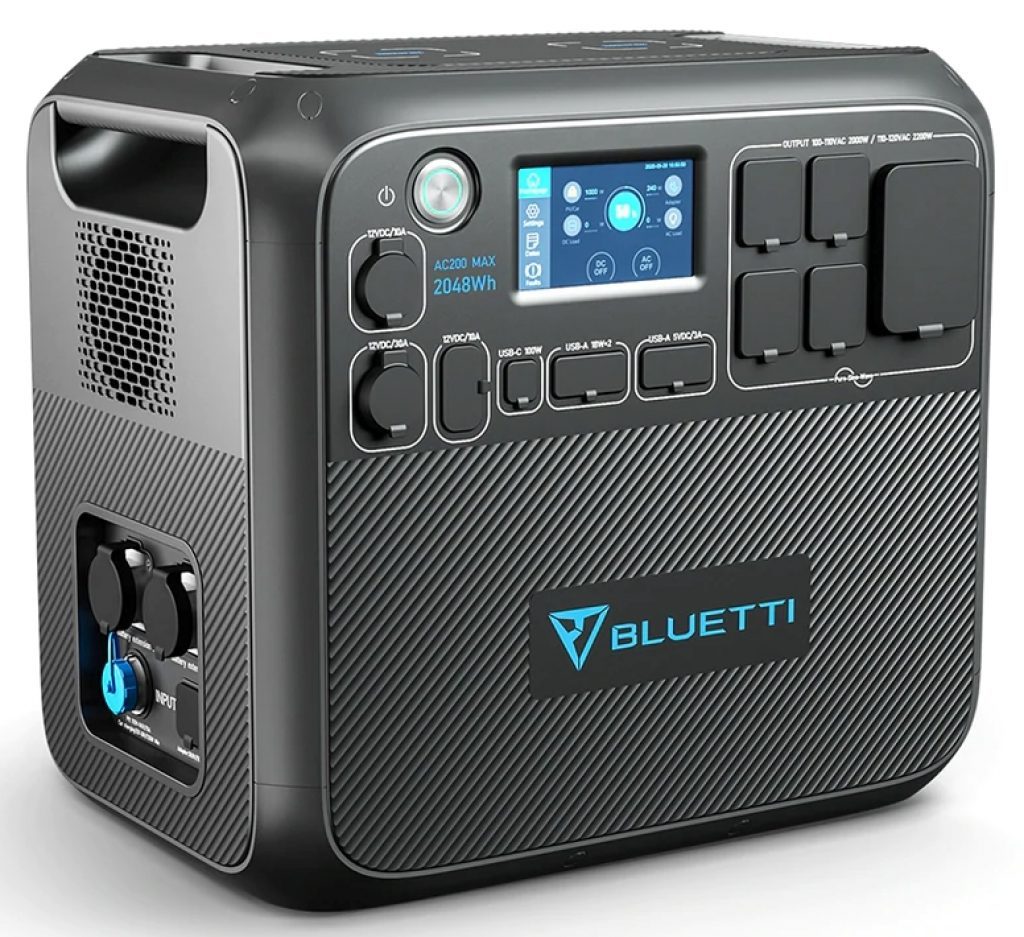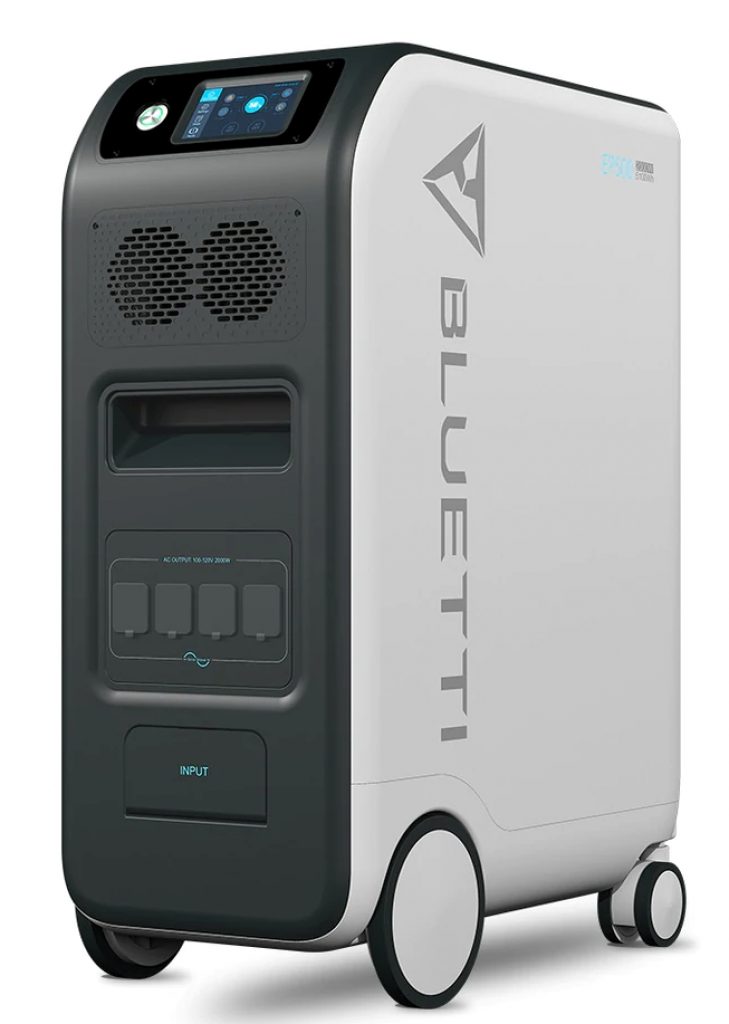If you’re looking for the most powerful solar generator on the market, you’re in luck!
Solar generators can be charged by solar panels, which convert sunlight into electrical energy. This energy is then stored in the solar generator’s battery for later use. Here’s the best part — this entire process produces zero carbon emissions.
Because they offer many advantages, solar generators are rapidly becoming a popular option for RVs, campervans, camping trips, and even as backup power sources for houses.
Depending on what you intend to power with a solar generator, you might be asking yourself, “Is there a powerful solar generator that can meet my power demands?“
This article provides you with the 7 most powerful solar generators. Furthermore, we discuss what these powerful generators can power, whether they are safe, and how heavy they are.
Table of Contents
7 Most Powerful Solar Generators
Here are the 7 most powerful solar generators (organized in descending order of continuous power output):
1. EcoFlow DELTA Pro Portable Power Station
Product Overview:
First up, the EcoFlow DELTA Pro is the most powerful solar generator currently available.
It offers an incredible 3600W pure sine wave inverter continuous power output, along with 3600Wh of LiFePO4 battery capacity.
Need even more? Pair two units together to reach a massive 7200W of power output.
Additionally, capacity can be expanded with extra battery modules. Each DELTA Pro Station can be expanded to reach up to 12.5kWh. If you pair two DELTA Pro units, you can achieve a system with 25kWh of capacity!
Trust us, that’s more than enough to keep your essential appliances running for a few days.
This powerful solar generator supports a maximum solar input of 1600W. Furthermore, you can charge it faster by combining different charging methods to achieve an outstanding 6500W of power input.
Tech Specs
| Continuous Power Output (Inverter Rating) | 3600W |
| Power Surge | 7200W |
| Battery Capacity | 3600Wh |
| Battery Expandability | Up to 12.5KWh per DELTA Pro Station (up to 25kWh pairing two units) |
| Maximum Input Rate | 6500W (multiple charging methods) |
| Solar Input Rating | 1600W |
| Battery Chemistry | LiFePO4 |
| Battery Life Cycle | 6,500 cycles to 50% capacity, 3,500 cycles to 80% capacity |
| Split-Phase Function | Possible by pairing two units |
| Output Options | AC, DC, USB-A, USB-C, RV port, Car Power Output |
2. BLUETTI AC300 Portable Power Station
Product Overview:
BLUETTI is probably the most popular brand when it comes to solar generators.
Its AC300 model offers an excellent solution for off-grid living or home backup power, with a continuous power output of 3000W.
The AC300 Power Station is entirely modular. You can connect up to four battery modules (BLUETTI B300) per AC300 unit. This way, you can have 12,288Wh of capacity.
What’s more, you can pair two AC300 to achieve double the power output and capacity. So the total capacity the AC300 + B300 system can provide is 24,576Wh. Amazing, right?
This model is capable of receiving 2,400W of solar charging input. It means you can fully charge a B300 (3,072Wh) battery module with as little as 1.5 hours of sunshine.
And if that’s not enough, the AC300 supports up to 5400W total input rate. The 5,400W input rate combines 2,400W solar and 3,000W AC. This dual charging method requires at least two B300’s packs.
All in all, a fantastic and powerful solar generator!
Tech Specs:
| Continuous Power Output (Inverter Rating) | 3000W |
| Power Surge | 6000W |
| Battery Capacity | 3072Wh |
| Battery Expandability | Up to 12,288Wh (or 24,576Wh by pairing two units with 4 expandable modules each) |
| Maximum Input Rate | 5400W (Multiple charging methods. Requires at least 2 B300 modules) |
| Solar Input Rating | 2400W |
| Battery Chemistry | LiFePO4 |
| Battery Life Cycle | 6000 cycles, until 50% capacity |
| Split-Phase Function | Possible by pairing two AC300 units |
| Output Options | USB-A, USB-C, RV Port 30A, AC, 12VDC, 24VDC, Wireless Charging Pad |
3. Hysolis MPS3K Power Station
Product Overview:
The Hysolis MPS3K features a massive capacity of 4500Wh and a continuous power output of 3000W.
With these specs, this unit is ideal for off-grid living, RV power, small commercial use, and house backup power.
It has a 30A RV port — perfect for those who wish to have clean and free energy while on the road.
What’s more, it can be changed pretty quickly, with a high maximum solar input rate of 1500W.
The MPS3K is equipped with a safety protection system that allows you to operate it without worrying about issues like PV array over/under-voltage, appliance short-circuited, devices drawing too much power, or high/low charging temperatures.
If something goes wrong, an alarm informs you while the error code is displayed on the LCD screen, letting you know exactly what happened.
Tech Specs:
| Continuous Power Output (Inverter Rating) | 3000W |
| Power Surge | 6000W |
| Battery Capacity | 4500Wh |
| Battery Expandability | Yes, up to two EXB-4500 Expansion battery packs (4500Wh each), reaching a total of 13.5kWh |
| Maximum Input Rate | 1000W AC, 1500W solar |
| Solar Input Rating | 1500W |
| Battery Chemistry | Lithium-ion (NCM) |
| Battery Life Cycle | ≈ 2000 cycles |
| Split-Phase Function | No |
| Output Options | AC, DC, USB-A, USB-C, Car plug |
4. Point Zero Energy Titan Power Station
Product Overview:
The Titan Power Station has a 3,000W power inverter (with a 6,000W surge) and a 2,000Wh lithium battery pack.
It’s completely expandable; you can add multiple 2,000Wh battery packs to expand your energy storage system. to up to 14kWh.
Its innovative design enables you to easily replace damaged batteries instead of rendering the entire equipment unusable.
Additionally, its “stackable” design facilitates transport because you can simply carry each module separately and set it up elsewhere.
Furthermore, you can recharge the batteries very quickly with solar panels or an AC wall plug. The Titan generator has two MPPT charge controllers, each of which can handle up to 1,000 watts of solar input.
Tech Specs:
| Continuous Power Output (Inverter Rating) | 3000W with 2+ battery packs (although 1500W is recommended for long life) |
| Power Surge | 6000W |
| Battery Capacity | 2000Wh (per battery pack) |
| Battery Expandability | Up to 6 extra batteries (2kWh each), total of 14kWh |
| Maximum Input Rate | 2000W |
| Solar Input Rating | 2000W (two ports, 1000W each) |
| Battery Chemistry | Lithium-Ion |
| Battery Life Cycle | Up to 2000 cycles (with 80% DoD) |
| Split-Phase Function | No |
| Output Options | AC, DC, RV port (30A) |
5. EcoFlow DELTA Max Portable Power Station
Product Overview:
Another great product from EcoFlow, the DELTA Max can power high wattage devices of up to 3400W thanks to EcoFlow’s X-Boost technology.
A single DELTA Max unit packs 2000Wh of capacity that can be expanded to 6kWh with the addition of two DELTA Max smart extra batteries.
A significant advantage here is that there are multiple ways to charge this unitYouou can plug it into an AC wall outlet or solar pane at home. On the road, charge the DELTA Max in your car or use portable solar panels, once you’ve set up camp.
A disadvantage is the type of battery. While the Li-ion NMC battery carries a high energy density, it has a short lifespan of about 800 to 1000 cycles.
Tech Specs:
| Continuous Power Output (Inverter Rating) | 2400W (3400W with X-Boost) |
| Power Surge | 5000W |
| Battery Capacity | 2016Wh |
| Battery Expandability | Up to 6kWh with DELTA Max smart extra batteries |
| Maximum Input Rate | 2600W |
| Solar Input Rating | 800W |
| Battery Chemistry | Lithium-ion (NCM) |
| Battery Life Cycle | 800 cycles to 80% capacity |
| Split-Phase Function | No |
| Output Options | USB-A, USB-C, 12V DC, AC outlets |
6. BLUETTI AC200MAX Expandable Power Station
Product Overview:
The AC200MAX was the first modular, expandable BLUETTI power station.
It’s perfect as an off-grid and “on the road” energy solution, it features 2048Wh of LiFePO4 battery capacity and 2,200W of continuous power pure sine wave inverter.
Up to two battery expansion modules can be connected to the AC200MAX unit, achieving 8,192Wh of capacity to boost the total capacity.
It can take up to 900W of solar input and 500W via the adapter.
Moreover, you can even charge it with AC + PV simultaneously, reaching a stunning 1400W total charging rate which can charge the AC200MAX unit in less than two hours!
Tech Specs:
| Continuous Power Output (Inverter Rating) | 2200W |
| Power Surge | 4800W |
| Battery Capacity | 2048Wh |
| Battery Expandability | Yes, up to 6,144Wh with 2×B230’s or 8,192Wh with 2×B300’s |
| Maximum Input Rate | 1400W |
| Solar Input Rating | 900W |
| Battery Chemistry | LiFePO4 |
| Battery Life Cycle | 6,500 cycles to 50% capacity, 3,500 cycles to 80% capacity |
| Split-Phase Function | No |
| Output Options | AC, DC, USB-A, USB-C, RV port, Car Power Output, Wireless Charging Pad |
7. BLUETTI EP500 Solar Power Station
Product Overview:
In 2019, BLUETTI released its first home energy storage system series: the EP500.
This power station features 5,100Wh of LiFePO4 battery storage and a 2,000W (or 3,000W for PRO version) pure sine wave inverter.
What’s more, you can pair two EP500 units (with the Split Phase Box) to double the rated power output and storage capacity.
With a maximum solar input rate of 1200W, the EP500 can be fully charged with solar panels in less than 5 hours.
In addition, up can use AC + PV input port simultaneously to charge the unit even faster!
Overall, this is a fantastic generator, capable of providing all the power you need to keep your most essential and critical appliances running.
Tech Specs:
| Continuous Power Output (Inverter Rating) | 2000W (or 4000W by pairing two EP500 units) |
| Power Surge | 4000W (or 8000W by pairing two EP500 units) |
| Battery Capacity | 5100Wh |
| Battery Expandability | 10.2kWh by pairing two EP500 units |
| Maximum Input Rate | 1800W |
| Solar Input Rating | 1200W |
| Battery Chemistry | LiFePO4 |
| Battery Life Cycle | 6000 cycles until 50% capacity |
| Split-Phase Function | Possible by pairing two EP500 units |
| Output Options | USB-C, USB-A, AC, DC, RV Port 30A (adapter sold separately), Wireless Charging Pad |
What Are These Powerful Solar Generators Capable Of Powering?
A powerful solar generator requires an inverter with an output of at least 2000W.
Why? Because even though most common house appliances are rated with a low wattage (ranging from 10W to 200W), some power-hungry devices require up to 2000W or more power.
Air conditioner, hairdryer, clothes dryer, microwave, power tools, and coffee maker are some of these “power-hungry” appliances. They demand a high wattage (from 1300W to 2200W) to function correctly.
Each powerful solar generator listed in the previous section can power pretty much any appliance, even the high wattage ones.
The solar generators (from the listed previously) with the lowest Inverter rate are:
- BLUETTI AC200 MAX: with a continuous inverter rate of 2200W
- Point Zero Energy Titan: with a continuous inverter rate of 2500W (but recommended 1500W for 2 battery packs)
But even though they present the lowest continuous inverter output rate (among the previously listed solar generators), they are still considered powerful because 2000W is usually enough to power any essential or everyday appliances.
Appliance Runtime Chart
To make things easy for you, we’ve prepared a chart showing examples of appliances that each solar generator can power, and — most importantly — for how long they can power each appliance:
| Appliance (average wattage) X Solar Generator | Phone Charge (5W) | Light Bulb (10W) | WiFi Router (20) | Drone Charger (35W) | Camera Charger (40W) | Mini Fridge (50W) | CPAP Machine (60W) | Laptop Charger (70W) | Ceiling Fan (75W) | Water Filter/Cooler (80W) | RV Water Pump (100W) | Medium-size TV (110W) | Refrigerator (170W) | Washer (500W) | Coffee Maker (1100W) | Electric Frying Pan (1200W) | Microwave (1300W) | Power Tools (1400W) | Hair Dryer (1600W) | Air Conditioner (2200W) | Dryer (3000W) |
|---|---|---|---|---|---|---|---|---|---|---|---|---|---|---|---|---|---|---|---|---|---|
| EcoFlow DELTA Pro (25 kWh) | 5000h | 2500h | 1250h | 714h | 625h | 500h | 417h | 357h | 333h | 313h | 250h | 227h | 147h | 50h | 23h | 21h | 19h | 18h | 16h | 11h | 8h |
| BLUETTI AC300 (24,576Wh) | 4910h | 2457h | 1228h | 702h | 614h | 491h | 410h | 351h | 328h | 307h | 246h | 223h | 145h | 49h | 22h | 20h | 19h | 18h | 15h | 11h | 8h |
| Point Zero Titan Energy (14kWh) | 2800h | 1400h | 700h | 400h | 350h | 280h | 233h | 200h | 187h | 175h | 140h | 127h | 82h | 28h | 13h | 12h | 11h | 10h | 9h | Can’t provide this wattage | Can’t provide this wattage |
| Hysolis MPS3K (13.5Wh) | 2700h | 1350h | 675h | 386h | 338h | 270h | 225h | 193h | 180h | 169h | 135h | 123h | 79h | 27h | 12h | 11h | 10h | 10h | 8h | 6h | 5h |
| BLUETTI EP500 (10.2kWh) | 2040h | 1020h | 510h | 291h | 255h | 204h | 170h | 146h | 136h | 128h | 102h | 93h | 60h | 20h | 9h | 9h | 8h | 7h | 6h | 5h | 3h |
| BLUETTI AC200 MAX (8,192Wh) | 1638h | 819h | 410h | 234h | 205h | 164h | 137h | 117h | 109h | 102h | 82h | 74h | 48h | 16h | 7h | 7h | 6h | 6h | 5h | 4h | Can’t provide this wattage |
| EcoFlow DELTA Max (6000Wh) | 1200h | 600h | 300h | 171h | 150h | 120h | 100h | 86h | 80h | 75h | 60h | 55h | 35h | 12h | 5h | 5h | 5h | 4h | 4h | 3h | 2h |
Are Powerful Solar Generators Safe?
This is a valid question you should ask before purchasing your solar generator.
The short answer is yes.
Overall
A powerful solar generator is very safe if you use it correctly.
Unlike traditional gas-powered generators, solar generators use sunlight as a clean and renewable energy source. Therefore, they don’t release toxic fumes, nor are they prone to flammable oil spills (or any other harmful substances).
Eliminating the need for refined fossil fuels (like gasoline and diesel) means eliminating several obvious safety hazards:
- Firstly, handling these fuels is dangerous on its own. They can burn your eyes and skin, and breathing these noxious fumes can be very harmful to the human body.
- Secondly, they are highly flammable (diesel less than gasoline), posing a fire risk.
By using solar generators, these risks are no longer a concern. Solar generators are easy-to-use devices that can be plugged into a wall outlet or solar panels to charge. They are maintenance-free and, unlike extremely noisy gas-powered generators, solar generators are quiet devices.
In fact, you can keep your solar generator inside your house, near your appliances, pretty much wherever you find convenient.
However, it’s important to note that, although solar generators are pretty safe devices, they can be quite dangerous if not used correctly.
Misuse of a solar generator can lead to electrocution, fires, or other injuries. It is therefore essential to read the instructions carefully and handle them correctly.
How Heavy Are Powerful Solar Generators?
Like most generators, solar generators are also a bit heavy, especially powerful ones.
Even though they are designed to be portable power stations, their large battery capacity makes them heavier than most people can comfortably carry on their own. For this reason, some models are equipped with wheels and handles to facilitate transport.
The weight of a solar generator depends on the battery chemistry (Lithium-ion batteries are lighter) and on the capacity (logically, the greater the capacity, the heavier the unit).
The table below lists the weights of the solar generators discussed earlier on in this article:
| Solar Generator Model | Weight Of Main Unit | Weight Of Extension Battery Module |
|---|---|---|
| BLUETTI EP500 | 76 kg / 167.5 lbs | ——- |
| Hysolis MPS3K Power Station (and EXB-4500 Expansion battery pack) | 55 kg / 121 lbs | 27 kg / 60 lbs |
| EcoFlow DELTA Pro (and EcoFlow DELTA Pro Smart Extra Battery) | 45 kg / 99 lbs | 38 kg / 84 lbs |
| BLUETTI AC200 MAX (and B300 battery module) | 28 kg / 62 lbs | 36 kg / 80 lbs |
| EcoFlow DELTA Max (and EcoFlow DELTA Pro Smart Extra Battery) | 22 kg / 48 lbs | 38 kg / 84 lbs |
| BLUETTI AC300 (and B300 battery module) | 21 kg / 48 lbs | 36 kg / 80 lbs |
| Point Zero Energy Titan (and Titan battery pack) | 14.5 kg / 32 lbs | 36 kg / 80 lbs |
As you can see, the heaviest solar generator on the list is the BLUETTI EP500; its 76kg (167.5lbs) weight is pretty substantial. Luckily, this model has wheels, making it easy to maneuver.
At 55kg (99lbs), the Hysolis MPS3K is also relatively heavy. Thankfully, a wheeled dolly is offered as an accessory.
What Battery Type Do Powerful Solar Generators Use?
Powerful solar generators use Lithium-ion batteries: Lithium Iron Phosphate (LiFePO4) and Lithium Nickel Manganese Cobalt Oxide (NMC).
LiFePO4
Often referred to as the safest and most efficient battery currently on the market, the Lithium Iron Phosphate battery (LiFePO4) offers the longest life cycle compared to any current battery technology.
LiFePO4 batteries offer a longer lifespan, are lightweight, require no maintenance, and improved discharge and charge efficiency — these attributes make them great candidates for solar generators.
Therefore, this type of battery (LiFePO4) is usually present in powerful solar generators (with large battery capacities).
NMC
However, due to its higher energy-density (higher than LiFePO4), some solar generators are equipped with Li-ion NMC (Lithium-Nickel-Manganese-Cobalt-Oxide) batteries.
NMC batteries are lightweight and can charge and discharge very quickly (with recommended DoD of 80% to 90%). However, these advantages come at a high cost to the battery’s lifespan — they can be discharged to a 20% state of charge and last up to 2000 cycles (LiFePO4 batteries usually last 5000+ cycles).
Another major issue with NMC batteries is the potential environmental contamination once they reach the end of their life cycle (the cobalt can enter the environment through improper disposal).
Examples
Powerful solar generators that use LiFePO4 batteries:
- BLUETTI AC300
- BLUETTI EP500
- EcoFlow DELTA Pro
- BLUETTI AC200
Powerful solar generators that use Li-ion NMC batteries:
- Point Zero Energy Titan
- Hysolis MPS3K Power Station
- EcoFlow DELTA Max Portable Power Station
- Goal Zero Yeti6000X
- Goal Zero Yeti3000X
Final Thoughts
Power outages can happen anytime, anywhere. What’s more, they can last for several days.
In these situations, solar generators can be a fantastic energy source option. They are versatile devices, very convenient, and easy to use.
The solar charging feature makes them environmentally friendly, and it’s possible to charge them even in extreme cases where traditional power sources aren’t available. After all, the sun will always shine.
However, during power outages, small solar generators are pretty much useless, as they can’t power high-wattage appliances that are essential (like a refrigerator).
Therefore, powerful solar generators are the most appropriate option for these situations. They offer a high power output, capable of safely powering many loads simultaneously. In addition, a powerful solar generator has a large battery capacity, providing power for a long time before you need to recharge it.
In this article, we presented the 7 most powerful solar generators. Hopefully, one of them will suit your needs.

